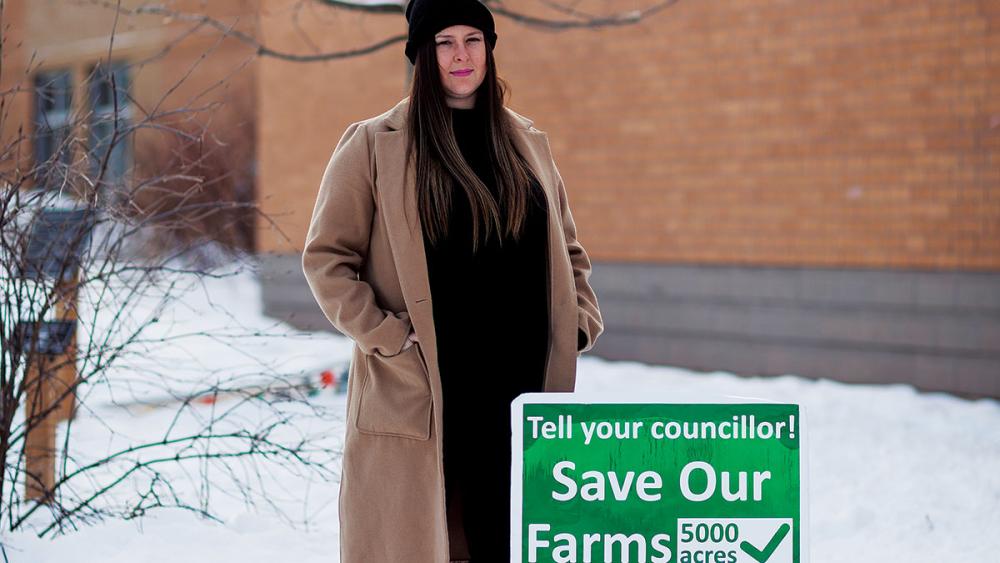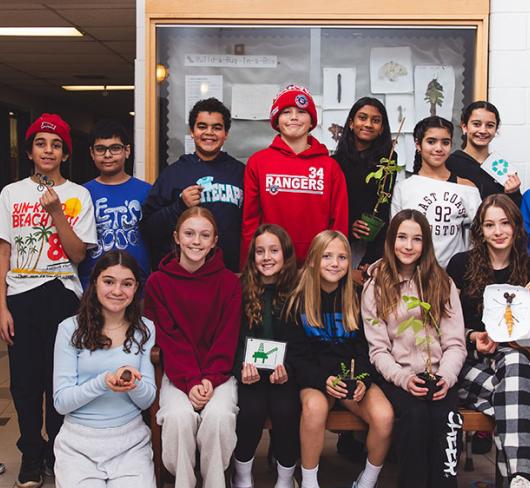
How Citizens Can Catalyze Change
A just and equitable recovery from the pandemic challenges our governments to think creatively while making decisions based on science and evidence that support environmental action and economic growth. Based on their track record on the environment, public education, health care and otherwise, it is clear that Ontarians cannot rely on the Ford Conservative government to do that. To address the climate emergency in Ontario and beyond, Ontarians need to elect what Canadian sustainable energy professor and contributor to the Intergovernmental Panel on Climate Change (IPCC), Mark Jaccard, calls “climate-sincere” governments.
- To assess the sincerity of the Ford government’s decisions on environmental policy Emma McIntosh and Fatima Syed at The Narwhal are maintaining an important in-depth record in advance of the June election. Here’s an abbreviation of some of the events from their research:
- Passed Bill 197 in June 2020 which included a major overhaul to Ontario’s environmental assessments. The assessments are vital in determining the negative impacts on surrounding green space, wildlife and watersheds.
- Eliminated the offices of the Environmental Commissioner, an independent provincial watchdog that held the government accountable on its environmental actions or inactions, and Ontario’s first Chief Scientist, which advised the government to ensure relevant policy decisions were rooted in science.
- Ignores the province’s Environmental Bill of Rights yearly. Auditor General, Bonnie Lysyk, created a 489-page report detailing how Ontario’s Environment Ministry is deliberately neglecting public transparency rules, billing taxpayers instead of companies for hazardous waste spills and permitting industry to avoid recycling among many other offences.
- Reduced provincial funding for the nonprofit Anishinabek/Ontario Fisheries Resource Centre by 70 percent and reduced its funding to the non-profit, public-interest Canadian Environmental Law Association by 30 percent.
- Ended the cap-and-trade emissions reduction program, despite scientific research supporting cap-and-trade programs as the most cost-effective and efficient way to reduce greenhouse gas emissions. According to McIntosh and Syed, “The decision to end cap-and-trade spelled the end of a $100 million budget for school repairs, a $337 million Green Ontario Fund that offered people rebates to retrofit their homes and businesses with energy-saving technologies, and 227 clean energy programs that included 120 commuter cycling programs in 120 jurisdictions across the province, 41 sustainable social housing programs and 20 retrofit projects for social housing apartments. In October 2019, Ontario’s Superior Court determined the Ford government acted illegally when it killed the program without first carrying out the required public consultations.”
- Cancelled 758 hydroelectric, solar and wind farms contracts including some that were mid-construction as well as the 50 Million Tree Program.
- Accelerated plans for Highway 413 and the Bradford Bypass through Ontario’s protected Greenbelt.
Highway 413: A Collision Course Against Science
An important controversial wedge issue this election is Highway 413 that will run through essential farmland, greenspace, sensitive headwaters of four watersheds and culturally significant land to Huron-Wendat and Mississaugas of the Credit First Nations. The Ontario NDP, Green Party and Liberal Party have all stated they would stop the highway following the next provincial election. The Progressive Conservative government revived this project immediately after coming into office in 2018 and continues to pursue its construction, despite the scientific data. This could be a relevant and relatable inquiry study in junior and intermediate classrooms supporting social studies, science and language connections.
Also known as the GTA West Corridor, the highway was first considered in 2005 and halted by the former Premier Kathleen Wynne’s government. This proposed four to six-lane, 59 kilometre highway would pass through the municipalities of Vaughan, Caledon, Brampton and Halton Hills. The province began an Environmental Assessment in 2007. By 2015 the Ministry of Transportation commissioned an expert advisory panel to review the project. In February 2018 the Wynne government accepted the recommendation from the panel that a proposed highway in the GTA West corridor is not the best way to address changing transportation needs in the region, ending the project. In the fall 2021 economic statement, the Ford government committed to funding the new highway, without detailing the cost, previously estimated to be $6 billion.
What Do Stakeholders Think?
Mississauga, Halton Hills, Orangeville, King Township, Vaughan and Brampton city councils, as well as Halton and Peel regions, have voted against the province’s project. York Region voted to reopen the discussion regarding their previous endorsement. Caledon is asking for a federal environment assessment though not without controversy surrounding their public consultation process. According to Isaac Callan from The Pointer, Caledon’s town council used a special council meeting instead of a standard council agenda, sidestepping the town’s obligation to offer reasonable notice to residents, thereby blocking Jenni Le Forestier, a community-minded music teacher and resident, from speaking on the topic.
Mississaugas of the Credit First Nation and the Canadian environmental advocacy organization Environmental Defence have had their federal Impact Assessment approved. Their request expressed concerns about effects on Indigenous People, consultation and treaty lands including ceremonial sites and burial sites, as well as the cumulative health impacts from decreased air quality from the increased dependence on vehicles, traffic and residential sprawl. Other matters of concern that have been raised are the effects on fish, migratory birds, species at risk and the loss of their habitats, urban greenspace and pollution of our watersheds.
The National Farmers Union has voiced their concerns about the impacts on agricultural land as the highway would be built on around 2,000 acres of Class 1 and 2 farmland, considered the most productive designation. In a changing climate, food independence and security deserves careful consideration.
The Ontario Trucking Association, and the Building Industry and Land Development Association are in support of the project.
What Does the Evidence Say?
Induced demand, the notion that increased highway capacity increases vehicle travel, is a well-documented urban planning phenomenon. For every one percent increase in highway capacity, traffic increases 1.1 percent five years out (Milam et al., 2017, Journal of the Transportation Research Board). An expert panel study found Highway 413 would only save drivers 30-60 seconds per trip, data contested by the Ford government. An Environmental Defence report found that Highway 413 would add over 17 million tonnes of greenhouse gas emissions by 2050 resulting in more than $1.4 billion in damages from that pollution. The IPCC has also directly linked the replication of outdated, suburban planning as a major contributor to the climate crisis. Yet, despite the evidence, the Ford government continues to overstate the congestion-reducing benefits of added highway capacity and underestimate the environmental impacts.
Who Benefits?
A National Observer and Torstar investigation found that 3,300 acres of land along the proposed route are owned by eight of Ontario’s most powerful land developers. At least four developers have donated to Doug Ford’s government or are former Tory politicians now acting as registered lobbyists. Susan Lloyd Swail, a King City-based landuse planning expert and public interest advocate, valued the agricultural land as low as $18,000 an acre while residential land values at least $1 million an acre. In her words, “There are hundreds of millions of dollars to be made right now simply by rezoning farmlands around the new freeway into development lands. And there are billions more to be made in the future from developing those lands into ever more residential and industrial sprawl.”
Talk is Our Best Tool
Unfortunately, evidence and facts have done very little to mobilize people to act, and bad news causes people to withdraw. We need well-focused tactics to influence people’s opinions to elect governments that share our vision for a sustainable society. According to Katherine Hayhoe, esteemed Canadian climate leader, atmospheric scientist and chief scientist for The Nature Conservancy amongst a long list of scientific advisory positions, the best thing we can do to fight climate change and shift someone’s beliefs is to talk about it. In her recently released Saving Us: A Climate Scientist’s Case for Hope and Healing in a Divided World and TED Talk Dr. Hayhoe describes how to have constructive conversations with people across communities and outside of our echo chambers. Project Drawdown’s comprehensive Table of Climate Solutions divided by sectors is helpful in offering optimistic examples of actions already taking place in preparation for your conversations. Since facts are less compelling than personal experiences, be ready with your personal connection to a warming planet. Why do you care about climate change?
Getting the Government We Deserve
By increasing peer-to-peer citizenship through conversations we strengthen policy dialogue forming our societal values and demands of our government. Good democratic governance involves growing widespread deliberate and inclusive public engagement on climate action, partnered with engaged citizens who press their government to be more responsive. Ontario needs innovative and bold leadership that rallies collectives, getting us all on board with the challenges ahead. Seth Klein’s A Good War: Mobilizing Canada for the Climate Emergency is an essential roadmap for government policy, advocates and anyone looking for specific political ways to transform our society. Klein’s blueprint of political actions is rooted in concrete lessons from a previous emergency, World War Two. From examples on how Victory Gardens changed our consumption patterns and produced over 52 million kilograms of vegetables to aggressive recycling programs challenging everyone to collect vital materials like bones and fat to make industrial glue. Posters as forward as “There are Bombs in Your Barn… There are Guns in Your Attic!” and “Waste is Unpatriotic!” had all Canadians participating and believing what they were doing contributed positively to help with the war effort. We need distinct Climate Change Committees in governments that use a Climate Mobilization Emergency framework with clear targets and dates. With a government that acts boldly, and uses scientific evidence in their decision-making, we can quickly decarbonize and electrify everything. Electrify the fleet of public vehicles (from Canada Post to public health vans) and support charging infrastructure; add solar panels to all public buildings; switch fossil-fuel burning appliances in need of replacement to electric; serve local food in cafeterias to reduce transportation emissions and support our agricultural independence; ban gas-powered vehicle advertisements in the same way we ban cigarette commercials, given the known harm these products cause.
World leaders are beginning to challenge the business-as-usual doctrine leading to our current climate crisis. New Zealand’s Prime Minister Jacinda Ardern has led boldly by initiating a lifetime ban on cigarette purchases for the upcoming generation, making their retail tobacco industry one of the most restricted in the world after Bhutan. Ardern was also the first prime minister in the world to take maternity leave and is the first to require all its biggest banks, insurance companies and investment managers to report the climate impacts of their business activities.
By talking about the importance of climate change, electing governments who understand the urgency of environmental action, using lessons from previous crises and evidence-based solutions to support our citizen demands and emulating global climate leaders, I remain optimistic that we, Ontarians, can catalyze the change needed to course-correct our current government’s head-on collision with science.
Informing Our Citizenship
Humans are cognitive misers; it is our tendency to look for solutions which take the least computation or thought. With the abundance of information available to us, we rely on trusted sources (family, friends, podcasters, journalists, authors) to help shape our opinions. For this reason, supporting and populating our feeds and networks with evidence-based information is important to informing our communal understandings and growing a strong democracy. Here are a few resources to help diversify your feed.
The Narwhal is a non-profit online magazine; their investigative journalists dive deep to tell stories about Canada’s natural world.
The Pointer is a subscription-based media platform that provides data-driven, locally-focused news. They believe that serious accountability journalism is fundamental to democracy and aim to protect residents by helping them make key day-to-day decisions in their lives.
The Canadian Centre for Policy Alternatives is an independent, non-profit research institute and think tank concerned with issues of social, economic and environmental justice. Their Alternative Federal Budget, now in its 26th year, offers solutions to ensure a transformative, publicly led and inclusive recovery from the pandemic. It is a unique Canadian project rooted in social justice values – like human dignity and freedom, fairness, equality, solidarity, environmental sustainability and the public good – and a strong belief in the power of participatory democracy.
The Angus Reid Institute is a national, nonprofit, non-partisan public opinion research foundation established to enhance and encourage better understanding of issues and trends affecting economic, social, governance, philanthropy, public administration, domestic and foreign policy in Canada and the world. Great for junior and intermediate classrooms when exploring polls, graphs and social studies!
Naomi Klein’s How to Change Everything: The Young Human’s Guide to Protecting the Planet and Each Other. As Greta Thunberg says, “Naomi Klein’s work has always moved and guided me. She is the great chronicler of our age of climate emergency, an inspirer of generations.”
Visit Environmental Defence to read more about the proposed highway projects, including their reports, and for ways to have your voice heard.
Sarah Lowes is a member of the Halton Teacher Local.

